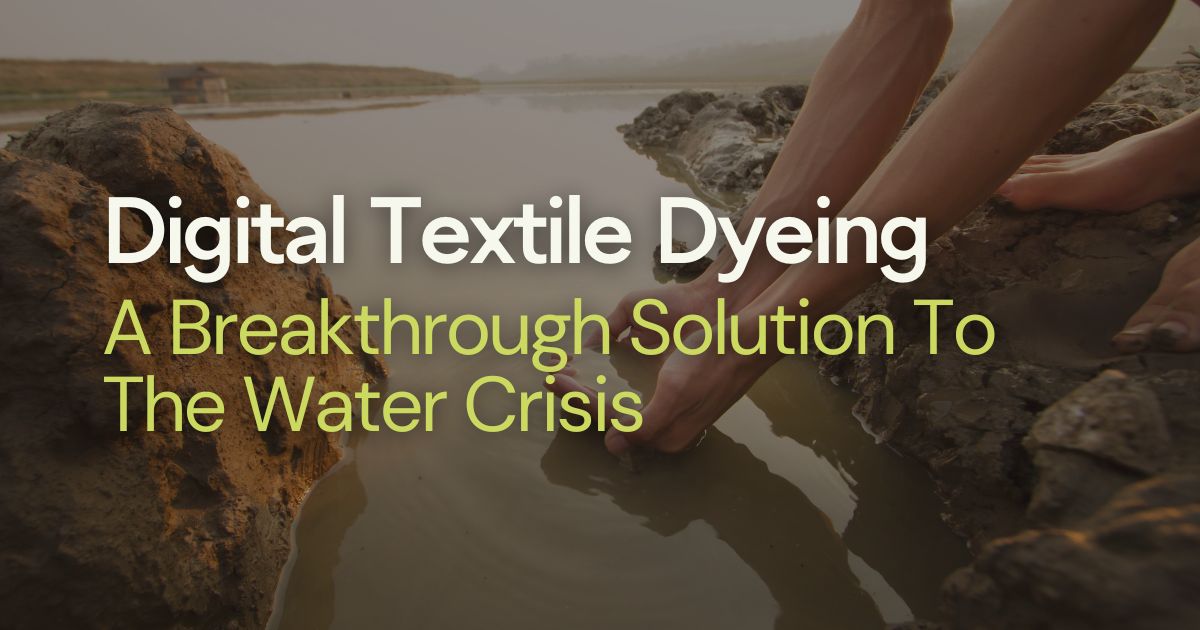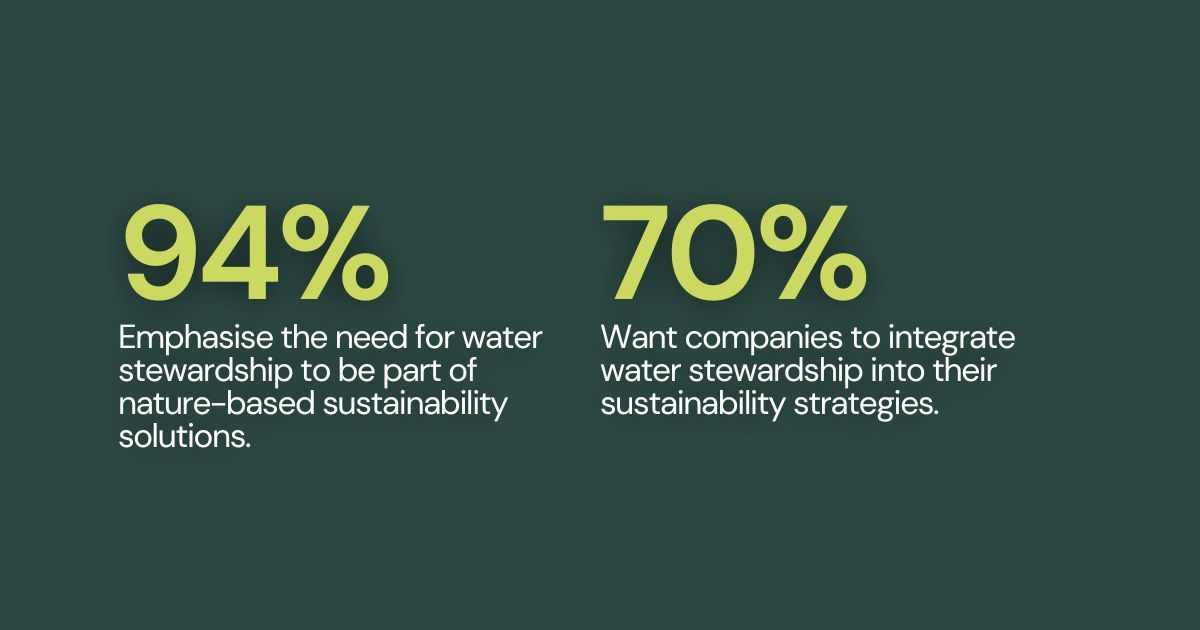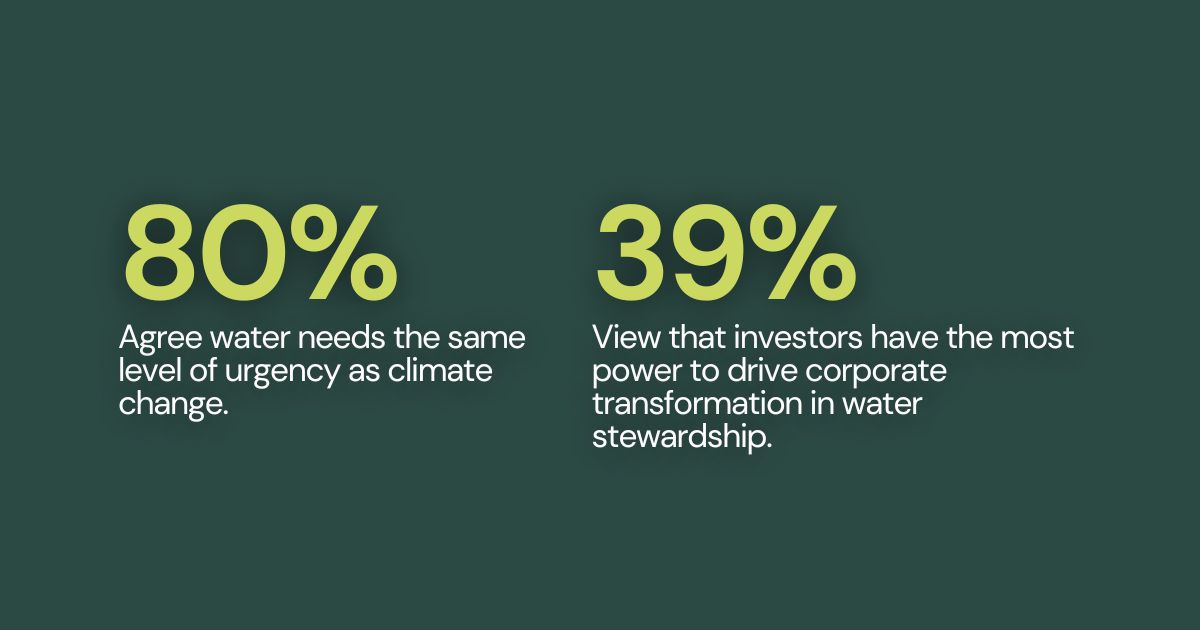
The fashion and textile industry is under growing pressure to reduce its environmental impact, with the water crisis the stand out issue. Traditional textile dyeing processes are among the most water-intensive in the textile supply chain - using up to 93 billion cubic metres of water annually and contributing 20% of global industrial wastewater.
For centuries, traditional textile dyeing methods have significantly contributed to the global water crisis. Today, with climate change intensifying and water scarcity increasing, the need for transformation is critical. Clean-tech innovations are revolutionising the industry with digital textile dyeing - a breakthrough solution to the water crisis.
The Textile Industry’s Thirst For Water
Traditional textile dyeing consumes vast volumes of water to deliver consistent, vibrant colours, typically through large dye baths or water vessels. These methods require high temperatures, chemical additives, and multiple wash and rinse cycles. Demonstrating how unsustainable the water use across the textile dyeing industry is.
This results in massive water consumption and toxic wastewater – often discharged untreated into rivers and waterways in textile manufacturing regions. In some areas, textile wastewater accounts for 70% of surface water pollution. This widespread contamination endangers local water supplies, biodiversity, human health, and industries alike.
According to the World Resources Institute, one-quarter of the world’s population faces the water crisis, particularly across the Middle East and South Asia. In key textile production countries, such as India, Bangladesh, and China, entire communities face water scarcity and pollution-related illnesses caused by outdated dyeing practices. However, the demand for change is growing. Public opinion, industry experts, and investors all recognise the urgent need for reform, with 63% of people believing water pollution is a “very serious” environmental issue, placing it above climate change.
 From Wasteful To Water Efficiency
From Wasteful To Water Efficiency
As climate change intensifies and the global population grows, the fashion and textile industry can no longer continue operating in the status quo. Transitioning from wasteful to water efficient systems, will require improved water management across the entire supply chain. By working collectively, brands and textile manufacturers can address one of the textile industry’s most pressing environmental challenges.
Innovations like digital textile dyeing significantly reduce wastewater, slashes water consumption, and eliminates harmful chemical discharge. This enables brands and textile manufacturers to use water more efficiently, helping to restore damaged waterways, secure clean water sources for communities, and build a resilient, future-proof textile dyeing process.
Digital Textile Dyeing: A Breakthrough Solution To The Water Crisis
At Alchemie Technology, we are redefining how textiles are dyed. For over 10 years, we have developed a digitally controlled dyeing process that eliminates the need for water in the dyeing phase. Instead of flooding fabric with dye, our technology jets the exact amount of dye onto the textile surface using precise digital application.
 This innovative approach reimagines the entire concept of textile dyeing process, delivering exceptional colour quality without the environmental cost. By reducing wastewater pollution, brands and manufacturers can actively protect public health and preserve local ecosystems.
This innovative approach reimagines the entire concept of textile dyeing process, delivering exceptional colour quality without the environmental cost. By reducing wastewater pollution, brands and manufacturers can actively protect public health and preserve local ecosystems.
With partners across Europe and Asia, Alchemie Technology is already helping major brands and textile manufacturers transition to a low-impact production model. Digital textile dyeing offers a breakthrough solution to the water crisis but also paves the way to a truly sustainable future for the textile industry.
Transition to sustainable textile dyeing by connecting with us at enquiries@alchemietechnology.com.
